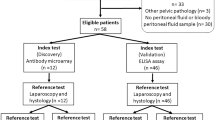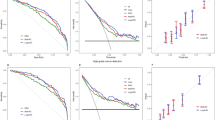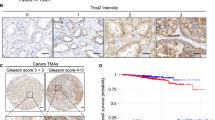Abstract
Death from cancer results from the development of metastases or local progression of tumour. Metastasis and local progression may result from the inappropriate activity of metalloproteinases released by tumour cells or of their regulatory peptides. We have developed quantitative assays for interstitial collagenase, stromelysin 1 and tissue inhibitors of metalloproteinase (TIMP) 1 and 2, which have allowed the study of serum levels of these proteins. Sera from 40 patients with prostatic cancer, stored prior to and after 6 and 12 months' treatment with a gonadotrophin-releasing hormone agonist and an anti-androgen were analysed. Levels were compared with two control groups, comprising 21 patients with active rheumatoid arthritis and 56 age-matched hospital attenders without arthritis or cancer. Contrasting levels have been found in patients with prostatic cancer as compared with hospital controls without cancer and patients with rheumatoid arthritis. Patients with prostatic cancer had higher levels of TIMP-1 and collagenase (P = 0.0001) and lower levels of TIMP-2 (P = 0.003) than controls. Patients with metastatic cancer had significantly higher levels of collagenase than those without metastases (P = 0.02). Patients with rheumatoid arthritis had significantly higher levels of stromelysin than either controls (P = 0.002) or patients with cancer (P = 0.008). Serum tissue inhibitor of metalloproteinase 1 in combination with collagenase levels was as sensitive as prostate-specific antigen as a marker of metastatic disease. These findings provide a basis for the investigation of the role of metalloproteinases and their inhibitors in other malignancies.
This is a preview of subscription content, access via your institution
Access options
Subscribe to this journal
Receive 24 print issues and online access
$259.00 per year
only $10.79 per issue
Buy this article
- Purchase on Springer Link
- Instant access to full article PDF
Prices may be subject to local taxes which are calculated during checkout
Similar content being viewed by others
Author information
Authors and Affiliations
Rights and permissions
About this article
Cite this article
Baker, T., Tickle, S., Wasan, H. et al. Serum metalloproteinases and their inhibitors: markers for malignant potential. Br J Cancer 70, 506–512 (1994). https://doi.org/10.1038/bjc.1994.336
Issue Date:
DOI: https://doi.org/10.1038/bjc.1994.336
This article is cited by
-
miR-618: possible control over TIMP-1 and its expression in localized prostate cancer
BMC Cancer (2018)
-
Beyond prostate-specific antigen: alternate serum markers
Prostate Cancer and Prostatic Diseases (2008)
-
Association of TIMP-4 gene polymorphism with the risk of osteoarthritis in the Korean population
Rheumatology International (2008)
-
Matrix metalloproteinases as diagnostic (MMP-13) and prognostic (MMP-2, MMP-9) markers of prostate cancer
Urological Research (2005)
-
Characterization of expression of matrix metalloproteinases and tissue inhibitors of metalloproteinases in prostate cancer cell lines
Prostate Cancer and Prostatic Diseases (2003)



